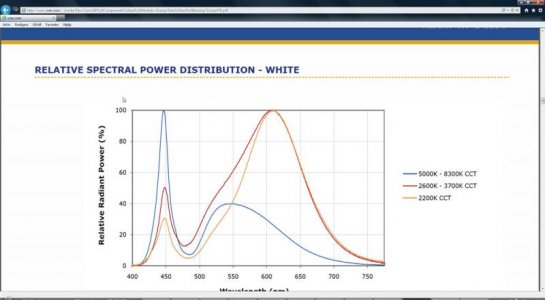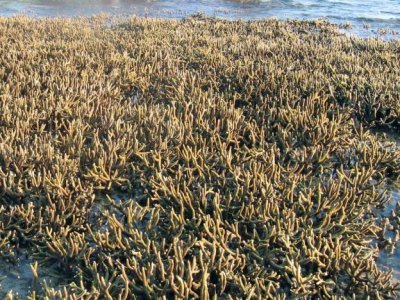Lassef
Member
It's hard to give advice on whether you have too much light, not enough, or the wrong kind of light without at least PAR values.
First off, your photoperiod should be 8-10 hrs and you are running between 3-8 hrs. Secondly, with no optics on any of these chips, you will not get adequate intensity for SPS. I use 100w multichips minimum for tanks that are 24" or taller. You are running an array of 10w multichips without specifying how close they are together. I don't have any experience with this kid of hybrid system, but in my opinion it gives you the worst of both worlds, the poor spectral distribution and shimmer of an array with the heat issues of a multichip.
Your generic chips may also have strange spectral qualities, as they rarely reflect the colour temperature numbers they are assigned by the manufacturer. I agree, a broader spectrum of blue light would help, but if I was to wager, I would say that you aren't getting enough light. Your new LED system is 400w and the outgoing MH was 1320. LED is more efficient than MH & T5, but you will likely need another 200w with smaller wattage multichips.
Perhaps someone out there has experience with these chips and can be of more help, but I haven't seen any colourful SPS tanks using them yet. I offer my apologies in advance to the 20 people who are about to post pictures of their colourful 10w multichip tanks
- add lenses
- increase photoperiod
- test PAR and raise or lower light accordingly
- possibly add more 50w or 100w chips
I read around 130 to 150 in PAR at the bottom of my 2 feet deep tank with 10 Watts multichip without lenses so at that deep I should not put the more light demanding SPS. In this 4 feet long tank I use around 400 Watt LED. 130 watts with lenses but directed against the rock wall (at a deep of app 1 feet).
For the dull colors - test to rise the intensity of the white LED:s and take down the blues for a while.
I do not belive that the bleaching is caused by red light in this case.
However, my experiences is based on LED from another vendor.
Sincerely Lasse




